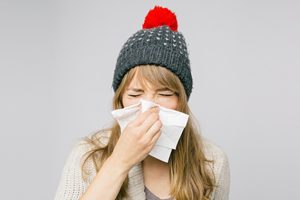
If you suffered from pollen all year and thought the worst was over, you'd unfortunately be wrong. Many people who suffer from pollen allergies also have to deal with many winter allergies as well.
What exactly are those allergies? Mold, dust, dust mites and, of course, pet dander. In fact, many areas across the nation haven't hit their first frost yet, so ragweed may still be an issue. Over the past 10 or 15 years, ragweed season has shockingly lengthened by four weeks.
Here are some nasty winter allergies and how you can manage them:
Dust and dust mites
Dust allergies tend to worsen after we clean the house. However, in order for us to manage allergies, we have to keep it clean. How do we do that? Think about wearing a mask when cleaning. Remove carpets, minimize humidity and use mite-proof cases.
Mold
Outdoor mold spores tend to become more aggressive later in the day and evening. They are also more common in certain businesses such as greenhouses, farms and flower shops, which are continuously wet. If you are struggling from mold in your own home, reduce humidity levels.
Pet dander
15 to 30 percent of people who suffer from allergies, also have allergic reactions to pets and dogs. The best treatment is to avoid contact with cats and dogs. If you want to bring a dog into your family, think about a breed that doesn't have fur.
For more information on proper allergy management techniques and allergy control products, visit Allergy Be Gone today.









